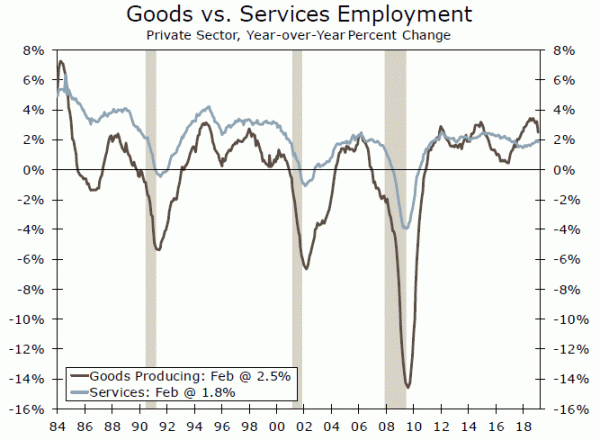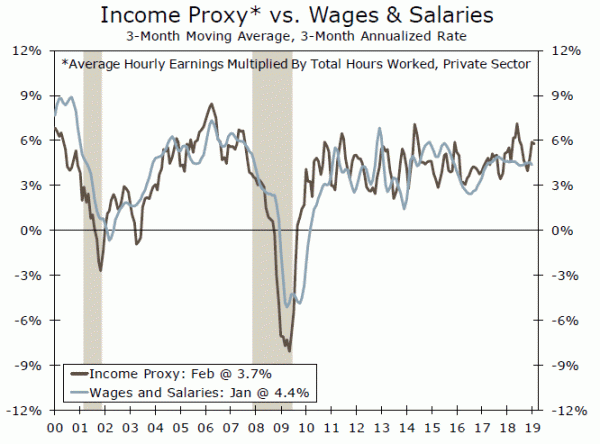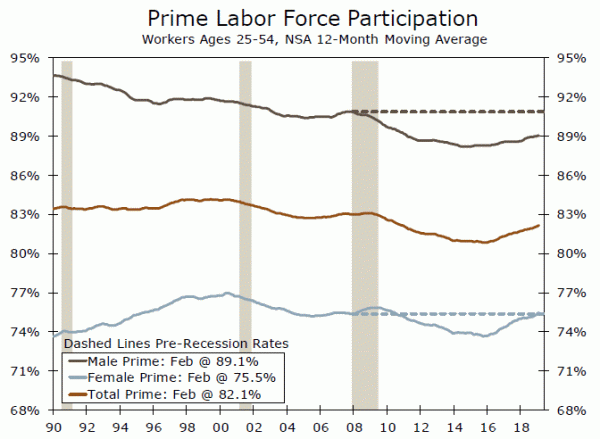The trend in hiring is slowing, although the paltry 20K gain in payrolls in February exaggerates the extent. Job growth remains strong enough for further labor market tightening, with unemployment down and wages up.
Not as Dire as It Seems, But Trend is Slowing
Through the extreme swings in payroll gains the past few months, the trend in job growth is moderating. Employers added just 20K new jobs in February. The disappointing print followed an impressive gain in January (upwardly revised to 311K), putting the three-month average at 186K. The slower trend in job growth looks consistent with the upward drift in jobless claims and softer survey readings on hiring from recent purchasing manager indices the past few months.
The return of more typical winter weather after a mild January and slowing growth overseas took a toll on hiring in the goods sector (down 32K). Construction payrolls fell 31K, mining was down 5K and manufacturers added the fewest jobs in about a year and a half (+4K). Service sector hiring also slowed (+57K vs. 194K average the previous three months).
Despite the slowdown, job growth remains strong enough for the labor market to continue tightening and put upward pressure on wages. Average hourly earnings rose 0.4% in February. While the gain might be somewhat exaggerated by the small number of new hires (who start at lower wages), earnings are up 3.4% over the past year, a new cycle high. With wage growth strengthening and more workers collecting a paycheck, income growth is holding up fairly well (middle chart). We look for consumer spending to remain solid as a result and mitigate the impact of slowing investment on GDP growth.
The unemployment rate declined two ticks to 3.8% last month, lowered in part by previously furloughed federal workers being back on the job last month and no longer counted as unemployed. The drop in unemployment leaves the unemployment rate within its recent range. The prime-age (25-54) labor force participation rate is still up 0.4 points over the past year, which has helped to arrest the downward trend in unemployment even as job growth has been robust. The additional pool of labor has given the FOMC one more reason to be “patient” with further policy tightening.
As we write this on International Women’s Day, it is an opportunity to highlight that much of the rebound in prime-age labor force participation this cycle has been driven by women (bottom chart). While men are still more likely to be in the labor force, the economy’s shift toward services like healthcare, which disproportionately employ women, has increased the relative demand for female labor. The uneven recovery between men and women highlights the challenges about the extent to which participation can rebound further, especially as activity in the more male-oriented industrial sector is beginning to cool. If the improvement in participation slows, we could expect to see the unemployment resume its downward trend, which would support more policy tightening later this year.














